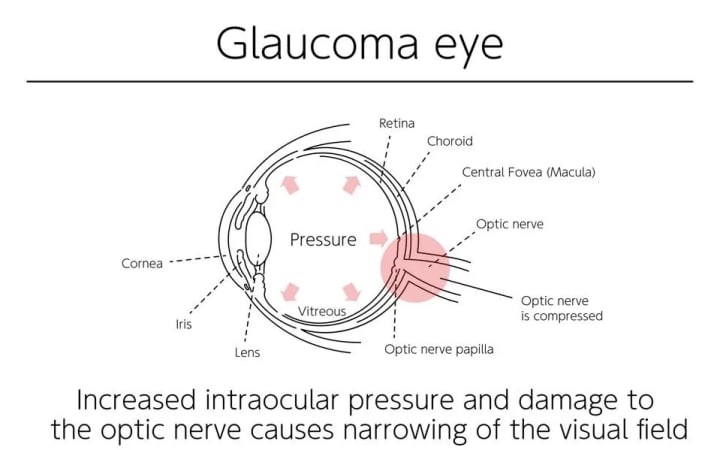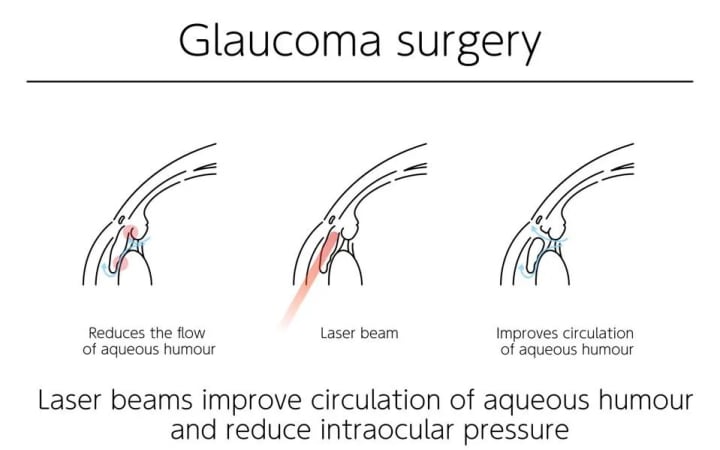Gene therapy is a promising development in the treatment of glaucoma.
2024 Will See Major Advances in Glaucoma Care

This article is a part of a series that will discuss the recent developments in the field of regenerative medicine. It is a part of a series that is devoted to the eye and the advancements that have been made in the process of recovering eyesight.
Regenerative medicine is a collection of treatments that restore to normal function tissues and organs that have been damaged by illness, harmed by trauma, or worn by time. I defined regenerative medicine in 1999 as the compilation of these therapies. I include a comprehensive range of medications that are based on chemicals, genes, and proteins, as well as cell-based treatments and biomechanical interventions that are aimed at accomplishing that objective.
Glaucoma is an eye illness that is very prevalent and affects millions of individuals all over the globe. As stated by the World Health Organisation (WHO), glaucoma is the second most common cause of blindness on a worldwide scale. Glaucoma affects nearly three million individuals in the United States alone, with around half of those affected being unaware that they have the condition.
The eye illness known as glaucoma is a complicated and persistent condition that may eventually result in the loss of vision and damage to the optic nerve. High intraocular pressure, which causes damage to the optic nerve over time, is the root cause of this condition. Everyone is susceptible to developing glaucoma; however, the illness is most prevalent in those who are over the age of 60, those who have a family history of the condition, and people of African, Hispanic, or Asian heritage.

A Treatment for Glaucoma
Glaucoma may be managed and vision loss can be prevented with the help of a variety of medications, which is a fortunate occurrence. Medication, surgical procedures, and device-based therapies, such as laser trabeculoplasty, are all possible treatments for this condition.
When it comes to treating glaucoma, medications are often the first line of therapy. They are effective because they reduce pressure and stop any additional damage from occurring to the optic nerve. When it comes to treating glaucoma, the drugs that are most often recommended are carbonic anhydrase inhibitors, alpha-agonists, beta-blockers, and prostaglandin analogues.
Surgical treatments are available for those who have more severe glaucoma or who are unable to tolerate the drugs that are being prescribed. For the purpose of lowering intraocular pressure, trabeculectomy is a surgical procedure that involves the creation of a new drainage channel. More precisely, it makes the drainage of the aqueous humour easier to accomplish.
In the course of this procedure, a surgeon will make a tiny aperture, also known as a "shunt," in the sclera and remove a section of the trabecular meshwork. The trabecular meshwork is a structure that resembles a sieve and is responsible for the elimination of the aqueous humour from the eye. The pressure that might cause harm to the optic nerve is reduced as a result of this new channel, which opens up the possibility of excess fluid draining.
When other approaches, like as drugs or laser therapy, have been unsuccessful in controlling glaucoma, trabeculectomy is sometimes explored as an alternative treatment option. Trabeculectomy is very effective in decreasing intraocular pressure. However, there are certain hazards associated with the operation, such as the possibility of infection, heavy bleeding, and loss of eyesight.
In addition to other treatment options, laser therapy is also an option for glaucoma. Patients suffering from glaucoma have the potential to benefit from these treatment choices because of their capacity to enhance fluid outflow from the eye, which in turn lowers intraocular pressure at the same time. The laser trabeculoplasty and the selective laser trabeculoplasty are the two basic laser treatments that are used for the treatment of glaucoma.

The drainage channels in the trabecular meshwork are opened up with the use of a laser during laser trabeculoplasty, which results in improved fluid outflow. On the other hand, selective laser trabeculoplasty is a technique that targets and treats certain regions of the trabecular meshwork while leaving other sections of the meshwork unaffected. Traditional laser therapy may have more adverse effects than this precise laser energy targeting, which may result in fewer adverse consequences.
The goal of ongoing research is to enhance the effectiveness of therapies for glaucoma, lessen the adverse effects of these treatments, and make them last for a longer period of time. Furthermore, genome-wide association studies are being conducted in order to investigate the genetic basis of glaucoma. This research has the potential to lead to the development of novel treatment options that are more successful. Gene therapy is now developing as a potentially useful new treatment option for glaucoma, which is a promising development.
Innovative Gene Therapy for the Treatment of Glaucoma
The purpose of gene therapy is to modify the genes that are responsible for glaucoma in order to stop any more damage from occurring to the optic nerve. Gene therapy has the ability to interrupt or even reverse the course of glaucoma by addressing the individual genes that contribute to this disorder with the intention of preventing its advancement.
The treatment of glaucoma with gene therapy is a method that is both novel and promising. In order to repair or replace the damaged genes that are responsible for the illness, this treatment entails the introduction of healthy genes into the gene pool of the eye cells. Gene therapy was shown to be effective in lowering intraocular pressure (IOP) and avoiding damage to the optic nerve in animal models of glaucoma, according to a research that was published in the Journal of Clinical Investigation.
In addition, researchers have concentrated their efforts on targeting certain genes and pathways that are linked in the development of glaucoma. These pathways include oxidative stress and inflammation. Additionally, developments in genetic engineering technology, including as CRISPR-Cas9 and optogenetic methods, have the potential to generate gene treatments that are more accurate and successful in treating glaucoma and other visual problems that are connected to it.
What Occurs Next?
We will be able to create more novel treatment options and get a better understanding of the processes that are responsible for the development of glaucoma if we continue our study and examination of the biological foundation of the ailment. We are able to lessen the likelihood of experiencing vision loss and blindness by using stronger preventative measures and management procedures that are more efficient.
About the Creator
Jacob Damian
Whether you're looking to learn something new, explore different perspectives, or simply satisfy your curiosity, I can offer you insights and perspectives that you may not have considered before. With my ability to process and analyse.






Comments
There are no comments for this story
Be the first to respond and start the conversation.